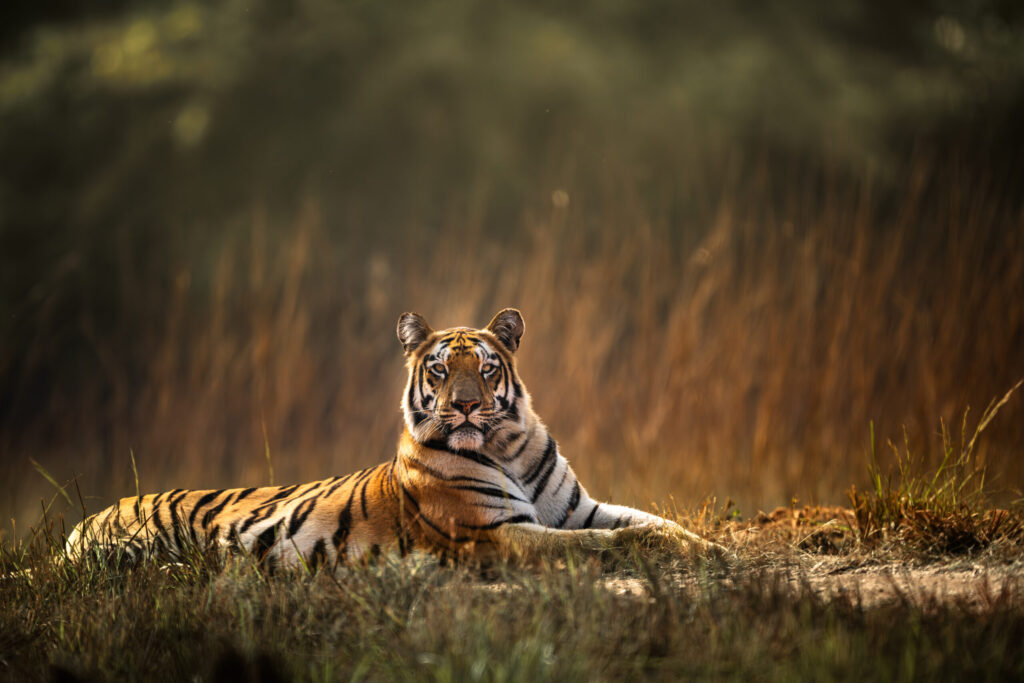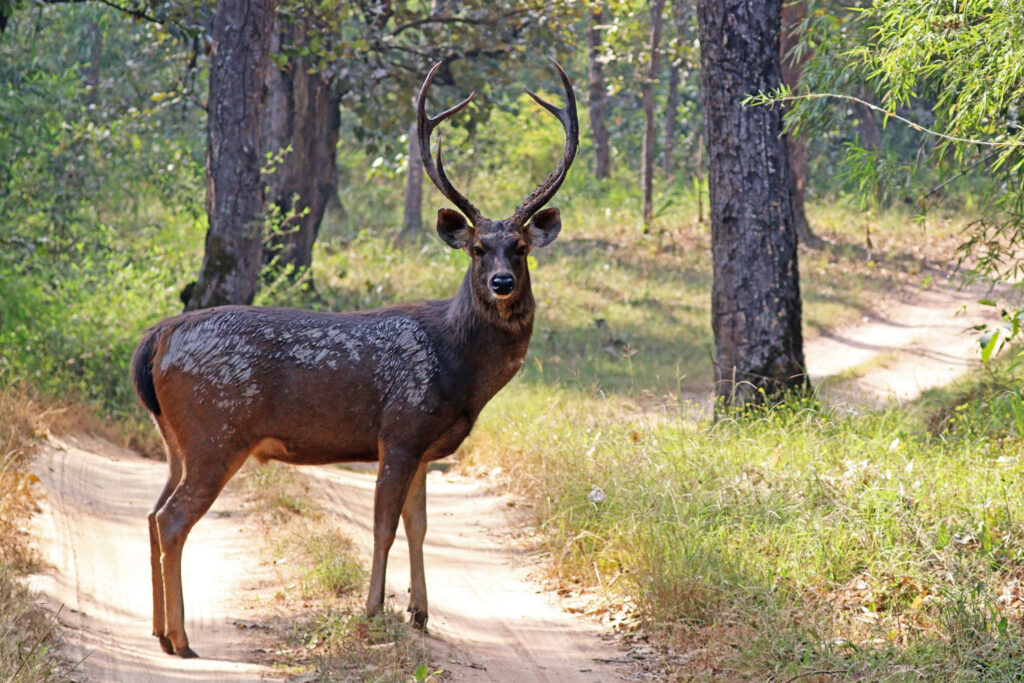Flora and Fauna You Must See in Ranthambore This Year
Top 8 Interesting Facts About Ranthambore Wildlife Sanctuary
October 1, 2025
How to Plan a Wildlife-Packed 2-Day Journey in Ranthambore
November 24, 2025Nestled in the heart of Rajasthan, Ranthambore National Park is one of India’s most celebrated wildlife destinations. Once the royal hunting ground of the Maharajas of Jaipur, it is now a haven for nature lovers, photographers, and conservationists. With its unique blend of historical ruins, dry deciduous forest, and open grasslands, the park offers a spectacular stage to witness the flora and fauna that make this place one of the best biodiversity hotspots in the country.
Whether you’re a wildlife enthusiast or a curious traveller, this year is the perfect time to explore the incredible Ranthambore Wildlife Safari. From majestic predators to vibrant birdlife and rare plant species, here’s your guide to the animals found in Ranthambore National Park and the mesmerising ecosystem they inhabit.

Iconic Animals Found in Ranthambore National Park
1. Royal Bengal Tiger
The crown jewel of Ranthambore wildlife, the Royal Bengal Tiger reigns supreme in the park. Known for their confidence and visibility during daylight hours, the tigers here are often seen resting near lakes, walking through grasslands, or lounging on ancient ruins. Each tiger in Ranthambore has a name and identity, making sightings even more personal.
2. Leopard
Although more elusive than the tiger, the leopard adds mystery to the Ranthambore National Park animals list. Found in the park’s rocky hills and dense forest zones, leopards are solitary and graceful predators.
3. Sloth Bear
Among the lesser-seen yet fascinating animals found in Ranthambore National Park, the sloth bear is a nocturnal species known for its shuffling walk and loud snorts. These creatures are often spotted near fruiting trees or termite mounds.
4. Indian Jackal & Striped Hyena
These scavengers form the backbone of the park’s food web. Their presence ensures a balanced ecosystem, as they feed on remains and help clean the habitat.
5. Sambar Deer & Chital (Spotted Deer)
Often seen grazing in herds, these herbivores are an essential part of Ranthambore wildlife. They are also prey for larger carnivores like tigers and leopards.
6. Marsh Crocodile
Seen basking along the park’s lakes, the marsh crocodile (or mugger) is another member of the predator list. These reptiles are ancient remnants of India’s prehistoric fauna.

Exploring the Flora and Fauna
1. Flora of Ranthambore
The flora and fauna of the park are intricately connected. The forest is mainly dry deciduous, dominated by Dhok (Anogeissus pendula), which covers nearly 80% of the park. Other common trees include banyan, pipal, neem, jamun, and mango, contributing to the forest’s resilience and diversity.
During the monsoon and winter seasons, the landscape turns lush green, creating a striking contrast to the otherwise arid terrain. Medicinal herbs, flowering shrubs, and thorny bushes add to the diversity of the flora and fauna ecosystem.
2. Wild Plants & Trees to Watch For
- Babul (Acacia nilotica): A thorny tree with medicinal properties.
- Ber (Ziziphus mauritiana): Bears small fruits and attracts a wide range of birds and insects.
- Flame of the Forest (Butea monosperma): Known for its vibrant orange-red flowers that bloom in summer.
These trees and plants support the life cycle of many Ranthambore National Park animals, providing them with food, shelter, and nesting grounds.
Avian Delights: Birdwatching in Ranthambore
For bird lovers, Ranthambore wildlife isn’t limited to big cats and mammals. The park hosts over 300 species of birds, making it a paradise for ornithologists.
Must-See Bird Species:
- Indian Grey Hornbill
- Crested Serpent Eagle
- White-throated Kingfisher
- Painted Stork
- Indian Peafowl (India’s national bird, abundant across the park)
Birds form an integral part of the flora and fauna network, as they help pollinate plants, disperse seeds, and maintain ecological balance.

Hidden Gems of Ranthambore Wildlife
While the tigers steal the spotlight, many lesser-known creatures deserve your attention.
1. Indian Pangolin
This shy, nocturnal mammal is rarely seen but is a fascinating addition to the animals found in Ranthambore National Park.
2. Monitor Lizard
Usually spotted near water bodies, these reptiles are excellent swimmers and feed on insects and small animals.
3. Nilgai (Blue Bull)
India’s largest antelope can often be seen grazing in open meadows. They are among the commonly visible Ranthambore National Park animals.
4. Desert Fox
Adapted to the arid environment, the desert fox is an agile and intelligent predator that adds variety to Ranthambore wildlife.

Best Zones to Explore Flora and Fauna in Ranthambore
Ranthambore National Park is divided into 10 safari zones, each offering a unique opportunity to explore the flora and fauna:
- Zone 1-5: Best for tiger sightings
- Zone 6-10: Rich in birdlife and rare herbivores
The geography of Ranthambore—with its valleys, hills, lakes, and ruins—supports a vast array of Ranthambore National Park animals, offering varied terrain that suits different species.
Tips for an Unforgettable Ranthambore Wildlife Safari
- Visit Between October and April: Wildlife sightings are most frequent during these months.
- Choose Morning or Late Afternoon Safaris: Animals are more active during these times.
- Hire a Knowledgeable Naturalist: They help spot and interpret Ranthambore wildlife behavior.
- Carry Binoculars and a DSLR Camera: To capture the grandeur of the flora and fauna.
- Be Silent and Respectful: Noise disturbs animals and ruins the experience for others.
Conservation of Ranthambore Flora and Fauna
The park is not just a tourist attraction but a crucial conservation zone. Ranthambore was one of the first reserves under Project Tiger, launched in 1973 to protect India’s endangered tiger population.
Today, efforts continue to safeguard the Ranthambore wildlife through:
- Anti-poaching patrols
- Habitat restoration
- Community involvement
- Ecotourism initiatives
Sustainable practices ensure that the animals found in Ranthambore National Park and their habitats are preserved for generations to come.
Final Thoughts: A Year to Explore Ranthambore’s Wilderness
Ranthambore is more than just a park—it’s a living, breathing ecosystem where the flora and fauna thrive in harmony. Every tree hides a story, every trail holds the promise of a tiger’s pawprint, and every lake could reflect the eyes of a crocodile or a painted stork.
This year, whether you’re making your first visit or returning for the tenth time, take a moment to appreciate the Ranthambore wildlife in all its glory. From the mighty Bengal tiger to the blooming Flame of the Forest, the Ranthambore National Park animals and plants promise an unforgettable journey into nature’s finest theatre. And to make the most of your experience, consider staying at the best resort in Ranthambore, where comfort meets the wild, and every morning begins with the sounds of the jungle.




